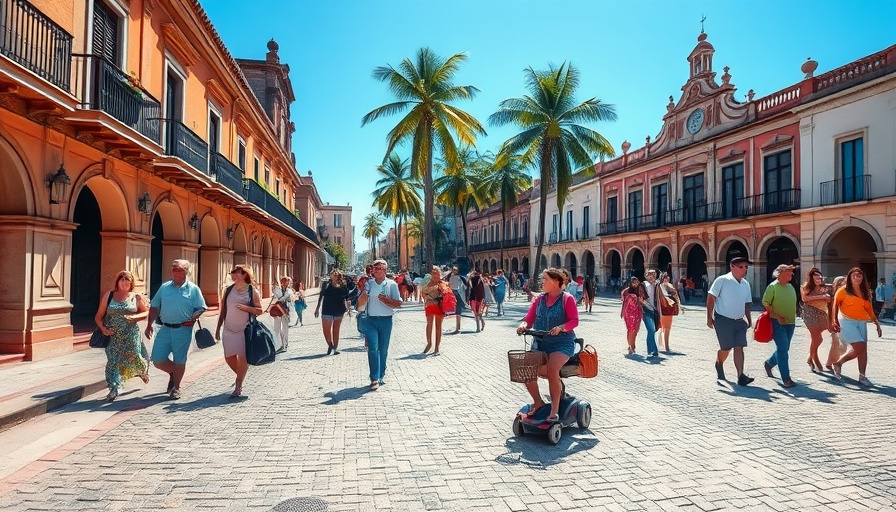
Accessible Tourism: A Growing Trend for All Travelers
Accessible tourism is no longer just a side note—it's a powerful movement reshaping the landscape of global travel. As highlighted in the recent TUR4all Travel Accessible Tourism Trends Report, this burgeoning sector is not merely a niche; it's a vibrant and expanding market that is proving essential for the future of travel.
Why Accessible Tourism Matters
With over 1.3 billion people worldwide living with disabilities, the urgent need for inclusive travel options has never been clearer. "This is not just about meeting social responsibility; this is a significant economic opportunity," says Miguel Carrasco, COO at TUR4all Travel. Destinations embracing universal design often cultivate a dedicated traveler segment—individuals willing to spend more on accessible experiences that enhance their journeys.
Spotlight on Spain: A Leader in Accessible Travel
When it comes to accessible tourism, Spain shines brightly. The country is not only catering to inbound travelers with accessibility needs but also nurturing a dynamic outgoing market of Spanish travelers eager for inclusive experiences abroad. In 2024, Spain’s dual role as a welcoming destination and a vibrant source market underscores its significant influence in this field.
Hot Trends in Accessibility
The report reveals the United States holds the title of Spain's most lucrative inbound market for accessible tourism, with American travelers spending an average of €273 daily. The desire for enriching cultural experiences and heritage-focused activities drives this spending, especially evident in Spain's beautiful cities and historical sites.
In addition to the U.S., travelers from the UK and France account for over one-third of inbound visitors looking for accessible vacations, favoring sun-soaked beaches and short cultural getaways. Germany is also making a mark with growing interests in nature, wellness, and culinary experiences—from wine tours to local food tastings.
Young, Old, and Adventurous: Travelers of All Ages
The survey found that senior travelers aged over 60 dominate both inbound and outbound flows; however, younger travelers are catching up. No longer a scene reserved solely for the elderly, the rise of accessible festivals, sporting events, and adventure tourism is fostering a whole new culture of travel that includes everyone.
The Role of Technology in Accessibility
What’s fueling this growth? Enhanced awareness, better accessibility information, and innovative technology are key contributors. Platforms like TUR4all Travel empower readers with comprehensive accessibility data covering accommodations, activities, and transportation options. This accessibility provides travelers with the confidence to plan journeys that eliminate barriers—making the travel experience significantly more enjoyable for everyone.
What Does This Mean for Travelers?
As parents, educators, and travel enthusiasts, understanding the growing importance of accessible tourism opens doors to endless possibilities. Whether you’re planning a family vacation or a getaway with friends, knowing which destinations prioritize inclusive experiences can help ensure that everyone enjoys their adventures—young and old alike.
For Future Travelers: Keep Accessibility in Mind
As we look to the future, it’s clear: accessibility is an integral part of quality travel experiences. Countries like Spain set an example of how putting accessibility front and center can foster economic growth while also encouraging joy and dignity in travel. So as you plan your next trip, remember to consider accessibility—it could lead to some of your best travel experiences yet!
Incorporating these insights into your travel planning will not only enhance your own adventures but also support the broader movement towards inclusive travel. With accessibility becoming an essential part of the travel landscape, we are welcoming a future where travel can truly be enjoyed by all!
 Add Row
Add Row  Add
Add 




Write A Comment